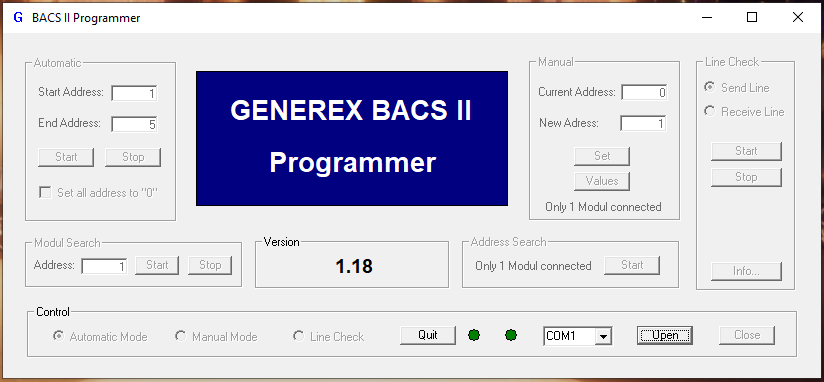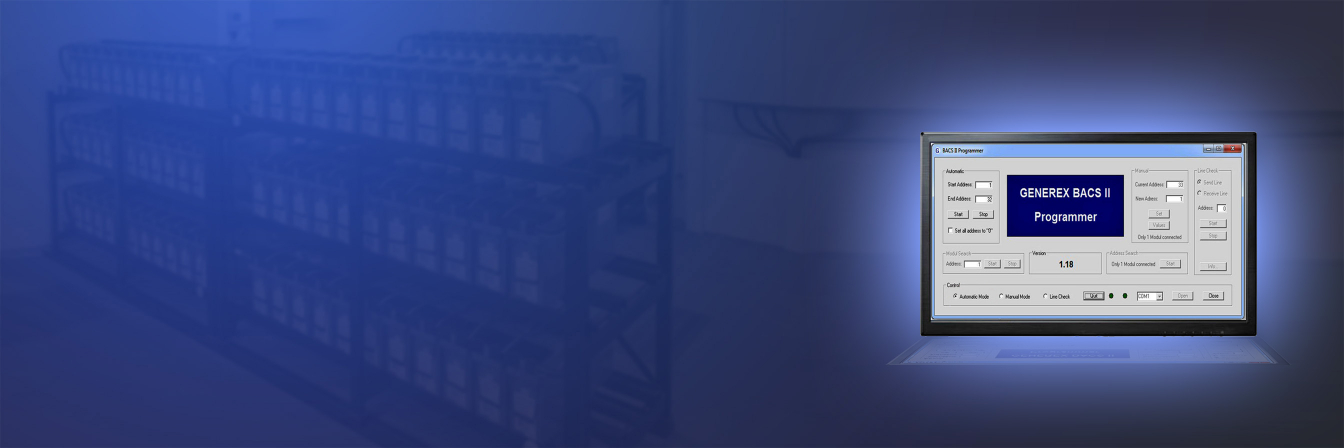When technical simulations meet reality
On-site technicians are often confronted with short maintenance windows during which a BACS system has to be put into service. With the BACS Programmer, errors can be detected and corrected during the active installation phase.
Especially when a system has to be completed within a predefined period of time, errors arise during installation:
- A cable was forgotten.
- Modules were accidentally assigned double IDs.
- Modules weren’t assigned an ID and are still set to the factory default “0”
- Cable lengths were exceeded.
- In the rush, plugs or outlets on the BACS modules were damaged.
- The BACS modules were connected in the wrong order and fuses were damaged or tripped.
When the problem isn’t something as obvious as a forgotten cable, troubleshooting can take a long time, depending on the size of the system, which results in the planned time period being exceeded.
With the BACS Programmer, you get a hardware maintenance tool
- Find duplicate IDs in BACS modules
- Find faults within the data transmission to the BACS bus
- Find defective connections and cables
How it works
The BACS Programmer can be connected to a BACS bus converter or, alternatively, directly to the BACS bus via a BACS WEBMANAGER BUDGET. If you use a BACS bus converter, you must make sure the BACS WEBMANAGER (or the CS141 when using the modular solution), is not connected to the modules because there can only be one controller at a time on the bus.
The BACS WEBMANAGER Budget detects access via the BACS Programmer and transfers the BACS management for the duration of the connection.
After successfully connecting, the BACS Programmer offers additional options for checking the BACS bus wiring and the quality of the data.

For whom is the BACS II Programmer interesting?
With the BACS Programmer, technicians can check the fundamental hardware including connectivity. In addition to an active bus wiring test, the features offer the option, as preparatory measures, of programming individual BACS modules for a special ID, resetting a system to the “0” ID value and re-initializing.
